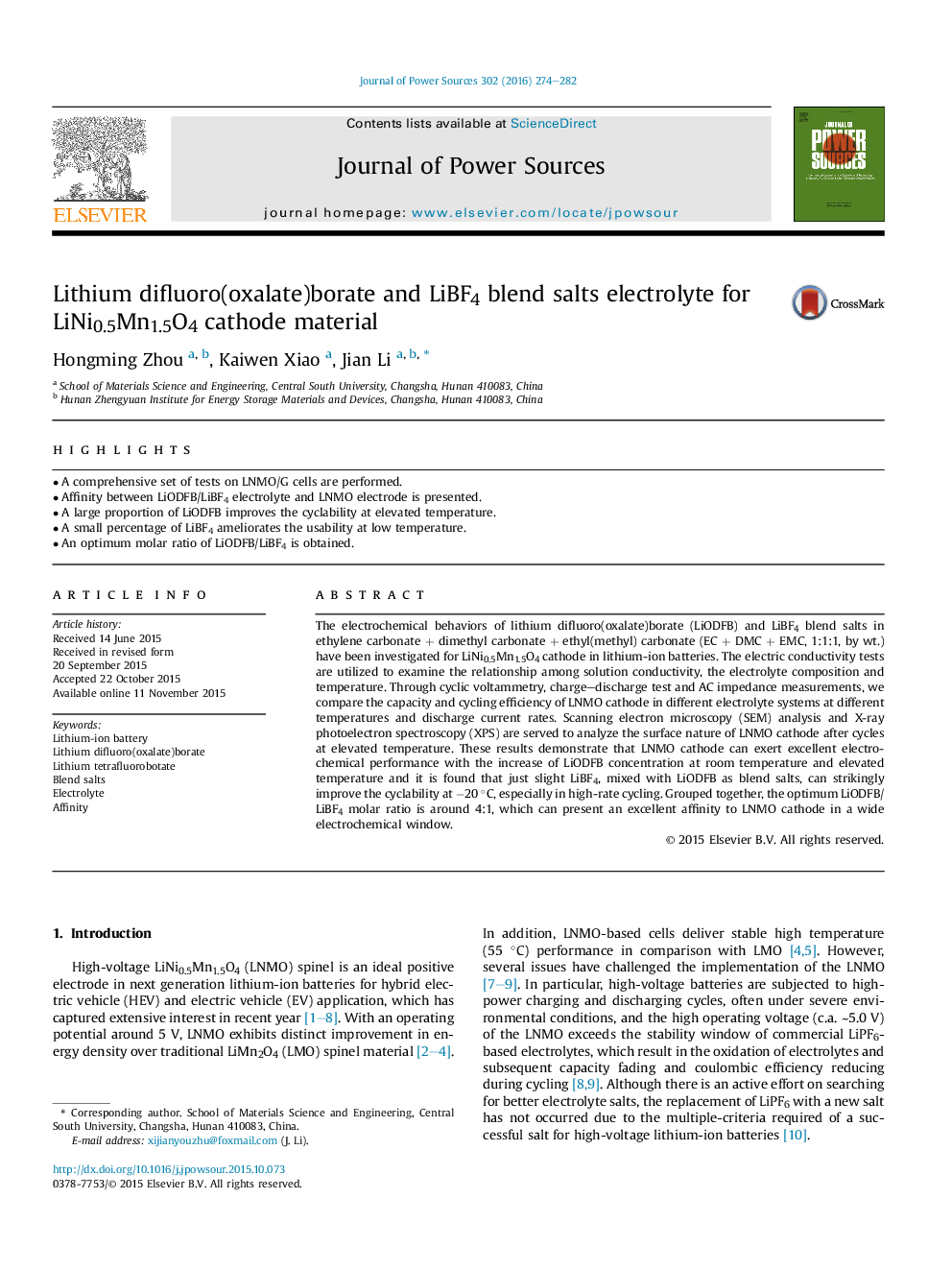| Article ID | Journal | Published Year | Pages | File Type |
|---|---|---|---|---|
| 7730075 | Journal of Power Sources | 2016 | 9 Pages |
Abstract
The electrochemical behaviors of lithium difluoro(oxalate)borate (LiODFB) and LiBF4 blend salts in ethylene carbonate + dimethyl carbonate + ethyl(methyl) carbonate (EC + DMC + EMC, 1:1:1, by wt.) have been investigated for LiNi0.5Mn1.5O4 cathode in lithium-ion batteries. The electric conductivity tests are utilized to examine the relationship among solution conductivity, the electrolyte composition and temperature. Through cyclic voltammetry, charge-discharge test and AC impedance measurements, we compare the capacity and cycling efficiency of LNMO cathode in different electrolyte systems at different temperatures and discharge current rates. Scanning electron microscopy (SEM) analysis and X-ray photoelectron spectroscopy (XPS) are served to analyze the surface nature of LNMO cathode after cycles at elevated temperature. These results demonstrate that LNMO cathode can exert excellent electrochemical performance with the increase of LiODFB concentration at room temperature and elevated temperature and it is found that just slight LiBF4, mixed with LiODFB as blend salts, can strikingly improve the cyclability at â20 °C, especially in high-rate cycling. Grouped together, the optimum LiODFB/LiBF4 molar ratio is around 4:1, which can present an excellent affinity to LNMO cathode in a wide electrochemical window.
Related Topics
Physical Sciences and Engineering
Chemistry
Electrochemistry
Authors
Hongming Zhou, Kaiwen Xiao, Jian Li,
